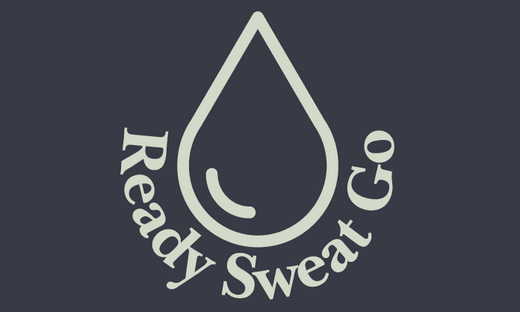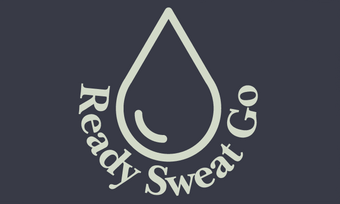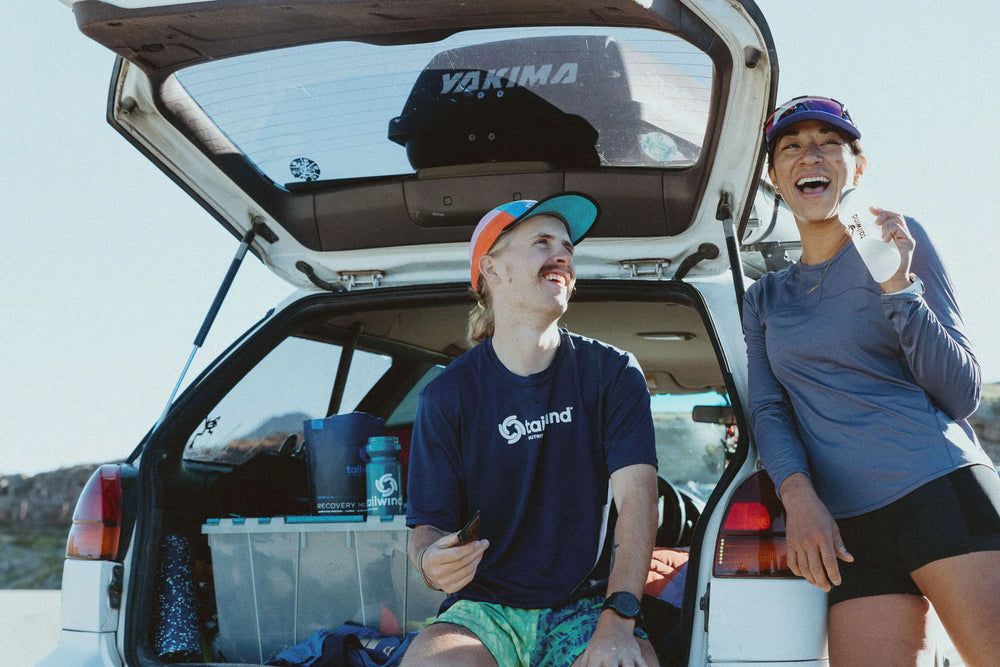A Journey Back to Natural Running

I've always had a keen interest in running. I'm not much of a runner, but I've always found it romantic. Not pounding the pavements on a wet, dark Tuesday morning, but more out in the wild, for miles and miles (if you can manage). It resets my head.
In a quest for fitness and health, people often consider running a simple and effective way to get there or at least to help. But weirdly, in doing so, we have overlooked the simplest yet most profound aspect of our physicality: how we move. Unless running competitively in some way, most people are rarely taught how to run.
When we had our two girls, I noticed how funny they looked when running. A really high foot strike (cadence), smaller strides, straight back and hands relaxed down at their sides. You'll see it easily when watching them run around a pool on holiday. Tiny legs, I thought. But then, as they grow, it doesn't change much; the strides get more prominent, and the cadence is still pretty high, but they still look relaxed, like they could do it all day. Which can be to our frustration sometimes if we're all honest!
Then I saw Haile Gebrselassie, the 5ft 5in Ethiopian, break the world record for the 2008 Berlin marathon in 2hrs, 3 minutes and 59 seconds. His head and hips didn't move, nor did his arms, and his legs spun like a windmill. I wanted to learn more.
When I dug deeper, it was barefoot running that provided a lot of the answers. It would seem that some of the mobility issues that hinder us in our later years could be alleviated by building strength and flexibility back into our feet - strength that we lose by wearing restrictive (and often unusually shaped) footwear for most of our adult lives.
The topic of running, specifically barefoot running, brought me face-to-face with our evolutionary past and raised questions about the impact of modern footwear on our bodies.

Endurance Running Hypothesis and Barefoot Running:
That's a grand heading; I can't remember where I stole it from. Daniel Lieberman, a Harvard-based paleoanthropologist, provides compelling evidence for what he calls the endurance-running hypothesis.
Lieberman's research suggests that the human body evolved not for speed but for endurance, with specific adaptations like shortened toes and elongated legs designed for efficient long-distance running. Like horses, humans have evolved to have a spinal structure and a 'nuchal' ligament to aid with running, keeping our head supported and facing forward - unlike an ape whose head would move from left to right if running on two feet like we do.
His 2009 study revealed that shorter toes, a trait that evolved over millennia, increase running efficiency and also reduce metabolic costs.
He also studied Kenyans for their ability to win long-distance races, over and above the competition year after year. He measured, among other things, their impact force on the ground and compared this to Western runners; his team soon realized that their biomechanics often differed. During the stride, Kenyans landed more often on the centre section of the foot, not the heel, like we were doing in the West. This stride makes for much better energy transfer, running economy and, more importantly, is often better for our joints.
As many Kenyans at that point were often barefoot for their entire youth, and their life encompassed walking and running large distances, they learned to move through life barefoot as humans have done for millennia. Just as nature intended. When an upcoming runner was 'sponsored' and given training shoes, they already had an economical, fast and safe running style. The shoes didn't interfere. But it was clear that things could be different if you wear them your whole life, especially from youth.
Anecdotal Insights:
One of my favourite books, Christopher McDougall's "Born to Run" provides a narrative backbone to this theory. Over a bit of a true-life wild goose chase, he explores the Mexican Tarahumara tribe's incredible running abilities and minimalistic footwear. The Tarahumara can cover great distances with little in the way of sustenance and only ever in minimal footwear. Challenging the notion that cushioned running shoes are necessary or beneficial.
Other books I stumbled across (#sorrynotsorry) were "Running with the Kenyans" and "Barefoot Running Step by Step", both seeming to advocate for a more natural running style. Running with the Kenyans by Anharrand Finn, seeks to discover why the Kenyans are so good. And to be honest, it doesn't quite crack the code! It does, however, echo things said by Dan Leiberman in his time there. Start young, eat well, run often, run far and yes, often in bare feet alone.
The other notable point I think about is how they don't run on tarmac, and if they do, it's not their main running surface, with unpaved trial being more the norm.
The Paradigm Shift in Running Shoes:
You won't need me to tell you that the big names in sportswear have grown substantially in the past sixty years, as with every primary industry or area. And in about the same time running shoes have undergone significant changes. Yet, the frequency of running injuries has remained relatively consistent. This stability in injury rates calls into question the actual impact of modern running shoes on injury prevention.
The marketing of these shoes often emphasizes enhanced performance and injury reduction. Yet, the evidence supporting these claims is not conclusive. There could be many reasons for this; running shoes have been around for quite a long time, at least as far back as before people began to measure things like running injuries. But that is nowhere near as long as man has existed, running without shoes. Running as a sport has grown by about 57% in the 30 years between 1986 and 2018. However, numbers have fallen away from the USA and Europe. Smaller races are giving away to much longer distances, with ultra marathons up 345% in the past decade alone.

High Heels and Biomechanics:
I didn't think I'd have this content anywhere on the Ready Sweat Go website, but here goes. It's safe to say that the effect of footwear extends beyond running, too. High-heeled shoes have been a staple in women's fashion for centuries. However, studies show that wearing these, especially for more extended periods, is associated with a range of issues, including hallux valgus (a fancy term for the deformity known as bunions - and no, it's not hereditary - you've done that to yourself through wearing shoes that are shoe shaped and not foot shaped and it can be undone too!), musculoskeletal pain, and an increased incidence of injuries.
The biomechanical changes induced by high heels are not limited to the foot-ankle complex; they resonate up the entire lower extremity, leading to altered gait biomechanics and postural instability and often to problems with hip placement and lower back pain. It could just be me, but I think things have started to change on this front, too.
The Impact on Posture and Everyday Movement:
Wearing shoes with elevated heels (from only 8mm that an average trainer shoe might come with) daily can lead to long-term changes in posture and movement patterns. We weren't designed to walk 'downhill' all day, every day. So, the body compensates for the altered centre of gravity, leading to potential musculoskeletal imbalances and an increased risk of falls later in life.
This adaptation starkly contrasts the natural biomechanics encouraged by barefoot or minimalist shoes, which typically have between 4mm heel drop and 0 mm. From reading 'Born to Run,' I remember a scene when the author Christopher McDougall comes across a native man in his early nineties walking through a canyon in Mexico. At least 10 miles from home, with another 6 to go before he reached his destination - a friend he was walking to see. McDougall mentions that the man had simply yet to be told he was old (and should be sitting doing nothing like we do here). He still had the biomechanics to do as he wanted, but perhaps more slowly than he used to in years gone by.
Are we limiting our later life potential for vanities sake, or for some other commercial reason?
Returning to Our Roots:
Given the above, the trend towards barefoot running and minimalist footwear seems like a step back to our roots, where running was a natural, uninhibited movement. The benefits of this approach include improved foot strength, better balance, and a more natural running gait. However, transitioning to barefoot running requires patience and a gradual adaptation process to avoid injuries.
Conclusion: Rethinking Footwear for Health and Performance:
Our exploration into running and footwear suggests that less is maybe more. As we reconsider the role of shoes in our lives, from high heels to cushioned running shoes, it becomes clear that our bodies may be better suited to simpler, more natural forms of movement. This realization applies to everyone seeking a healthier, more balanced relationship with their body and movement.
Here are some of the resources I've used in the past and some you might find useful should you want more information. Thanks for reading our blog!
https://www.vivobarefoot.com/uk/science
https://www.harvardmagazine.com/2011/08/run-barefoot-says-daniel-lieberman
https://www.instagram.com/thenaturallifestylist/?hl=en-gb
https://linktr.ee/Tfctribe?utm_source=linktree_profile_share




Leave a comment